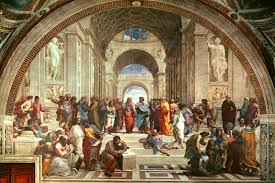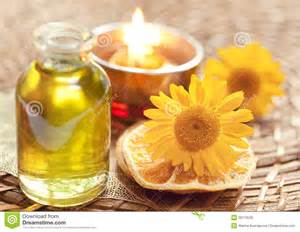







Although rational medicine declined in Europe after these early beginnings, it still continued in China and India. The Arabs, whose civilization advanced from the fourth century AD, were also keeping the scientific spirit alive. An Arab was one of the founders of the famous medical school at Salerno, near Naples and the Arabian physician Avicenna`s book, Canon of Medicine, published in the eleventh century, remained a standard work until the mid-sixteenth century. Avicenna was also thought to be responsible for the invention of distillation as a means of extracting essences from plants, and many of his principles are still in use today.
Great explorers and colonisers, the Arabs spread their knowledge throughout the known world. they were also great traders, and to a large extent were responsible for introducing many new plants from the East-spices in particular-which were used both in cooking and medicine.
TheMiddle Ages in Europe, stretching from roughly the sixth century to the Renaissance in the fourteenth-century was not an inspired time in terms ofmedical advance. A few lone voices were heard, though -one of them was that of the thirteenth-century Abbess of Bingen, St Hildegarde, who wrote four treatises on medicinal plants. The works are still referred to today.
The Black Death, which hit Europe in the early fourteenth century, destroyed between a third and a half of Europe´s population, contemporary medicine offering no more advice than to carry aromatic herbal pomanders, or burn aromatics in houses and at the corners of the streets. This was aromatherapeutic in theory, of course, but it was too little and too late.
With the Renaissance came the years of the great explorations. Christopher Columbus, unusually for this time, believed the world was round, and that he could reach the East-and its wealth of spices-by sailing to the West. He landed in 1492 in what he thought were the East Indies-in reality the Bahamas. it was from the opening up of America that many new plant species were introduced to Europe. The stimulant coca leaves chewed by the Incas were introduced from South America; and other plants used medicinally by the natives and the North American Indians, such as the balsams or baumes (of Canada and Peru), entered the European pharmacopoeiae.
Reference: Aromatherapy: The Encyclopedia of Plants and Oils and How They Help You: Daniele Ryman
- Home
- Vaginal infections and inflammation
- Threat to the Forests
- The Vinegar treatment for Thrush
- Treating Acid Environments
- Your Basic Travel Kit - Tummy Troubles
- Pamela L. Crowell on the Prevention and Therapy of Cancer by Dietary Monoterpenes
- Thrush (Candida) Case History
- Problems In Pregnancy
- The Work of Anne-Marie Giraud-Robert
- Thrush treatment for Men- Women
- Applications For Your Basic Care Kit - 4
- Fragrant Pharmacy
- Bites and Stings - General Action - Your Basic Travel Kit
- Whooping Cough
- Lymphoedema
- The journey
- Your Basic Travel Kit - Fevers
- Applications For Your Basic Care Kit - 3
- Your Basic Travel Kit - The Heat
- Aromatherapy-Cramps
- Aromatherapy-Articles-A-Z
- Verrucas and Warts
- Rabid Bites and Scratches - Your Basic Travel Kit
- Your Basic Travel Kit
- Wrinkles and Ageing Skin - Facial Scrubs
- Wrinkles and Ageing Skin - Cleansers
- Wrinkles and the Ageing Skin
- Fragrant way to Beauty - 2
- The Fragrant way to Beauty
- A-Z of Dance and Sports Injuries - 7
- A-Z of Dance and Sports Injuries - 6
- A-Z of Dance and Sports Injuries - 5
- A-Z of Sports and Dance Injuries - 4
- A-Z of Sports and Dance Injuries-3
- A-Z of Sports and Dance Injuries-2
- A-Z of Sports and Dance Injuries
- Aromatherapy - Locker Room Scents
- Aromatherapy- Stress & Sports - Jacuzzis
- Aromatherapy-stress & Sport - Saunas
- Aromatherapy - stress & Sport - Showers
- Stress and Sport - Aromatherapy
- Foot Care - 2 - Aromatherapy
- Foot Care - Aromatherapy
- MUSCLES-Aromatherapy
We have 50 guests and no members online

